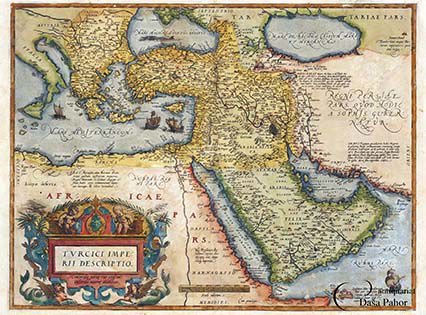Rethinking the Black Death: Can the Ottoman Plague Experience Offer Us Novel Insights?
- Dates
- Wednesday 20 October 2021 (14:00-15:30)

Historian Nükhet Varlık (History, Rutgers) will be joining us to discuss how studying the Ottoman experience of plague (from ca. 1340s to ca. 1940s – six-hundred years of uninterrupted outbreaks) invites new possibilities for rethinking the Black Death pandemic in its global context.
The evolutionary geneticist and biological anthropologist Hendrik Polinar (Anthropology, McMaster) will then provide a short response on the inter-disciplinary implications of such work. This event has been organised by the Birmingham Research Institute for History and Cultures (BRIHC), in collaboration with the Centre for the Study of the Middle Ages (CeSMA).
The Black Death pandemic of the mid-fourteenth century swept across a substantial portion of Afro-Eurasia, stretching from Central Asia to the Middle East, Europe, and North Africa. Producing an estimated mortality of up to fifty percent, the pandemic brought significant social, demographic, and economic changes everywhere it touched. However catastrophic, the Black Death was only a brief episode in the history of the so-called Second Plague Pandemic. Recurrent outbreaks continued over several centuries until plague gradually started to recede—from northern and western Europe in the late seventeenth to the early eighteenth century, from eastern and south Europe and Russia in the late eighteenth, and from the Middle East in the late nineteenth and early twentieth. As the last stronghold of the pandemic, the Ottoman case invites new possibilities for rethinking the pandemic in its global context.
The Ottoman experience of plague (from ca.1340s to ca.1940s —six-hundred years of uninterrupted outbreaks), the longest continuous manifestation of this disease in recorded human history, merits a systematic investigation. Situating the Ottoman case at the center of historical inquiry allows us to question, reconceptualize, and unsettle current historical and scientific wisdom about past plagues. This temporospatial intervention to the historiography not only invites exploiting new approaches, methodologies, and sources, but also promises to free plague scholarship from the prevailing European exceptionalism. Adopting a longer, multi-century timescale facilitates detecting the pandemic’s ebb and flow over the longue durée.
In this presentation, Professor Varlik will draw from her ongoing research on the Ottoman plague experience. Using historical, epidemiological, and ecological approaches, she examines the transformations of Ottoman plagues in the context of larger environmental and ecological changes, especially those in the flora and fauna of the eastern Mediterranean region. To this end, Professor Varlik will use a variety of sources and methodologies, including Ottoman and non-Ottoman archival and narrative sources, art history and literature (especially for representations of animals and nature), and draw from bio- and zoo-archeological analyses of human and animal remains, ancient DNA analysis of Yersinia pestis, historical epidemiology and digital mapping, ecology, and climate science.